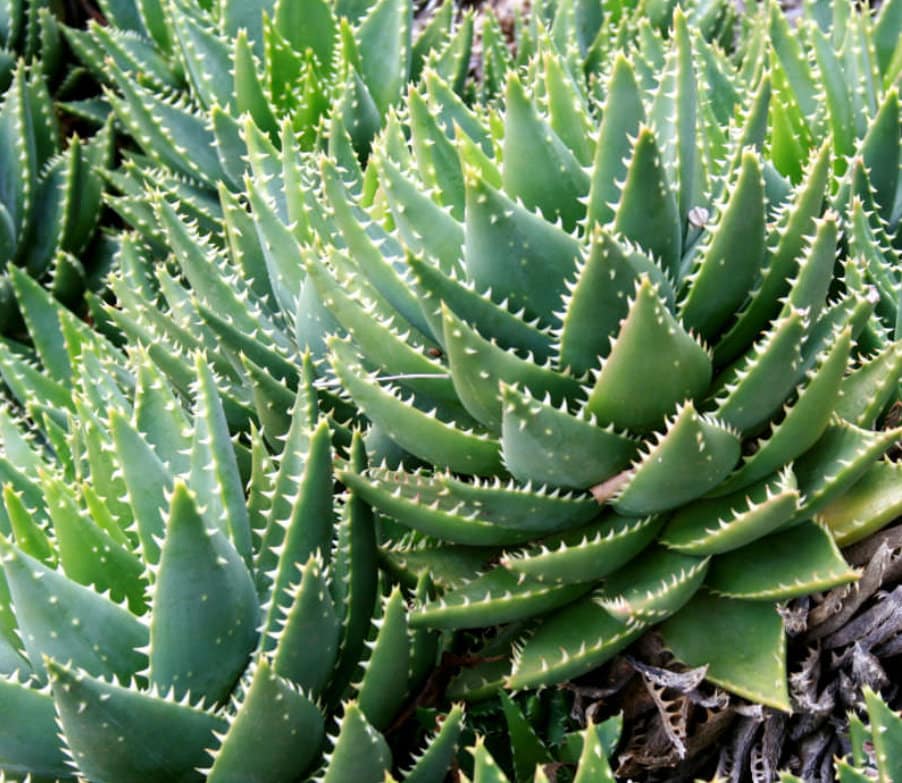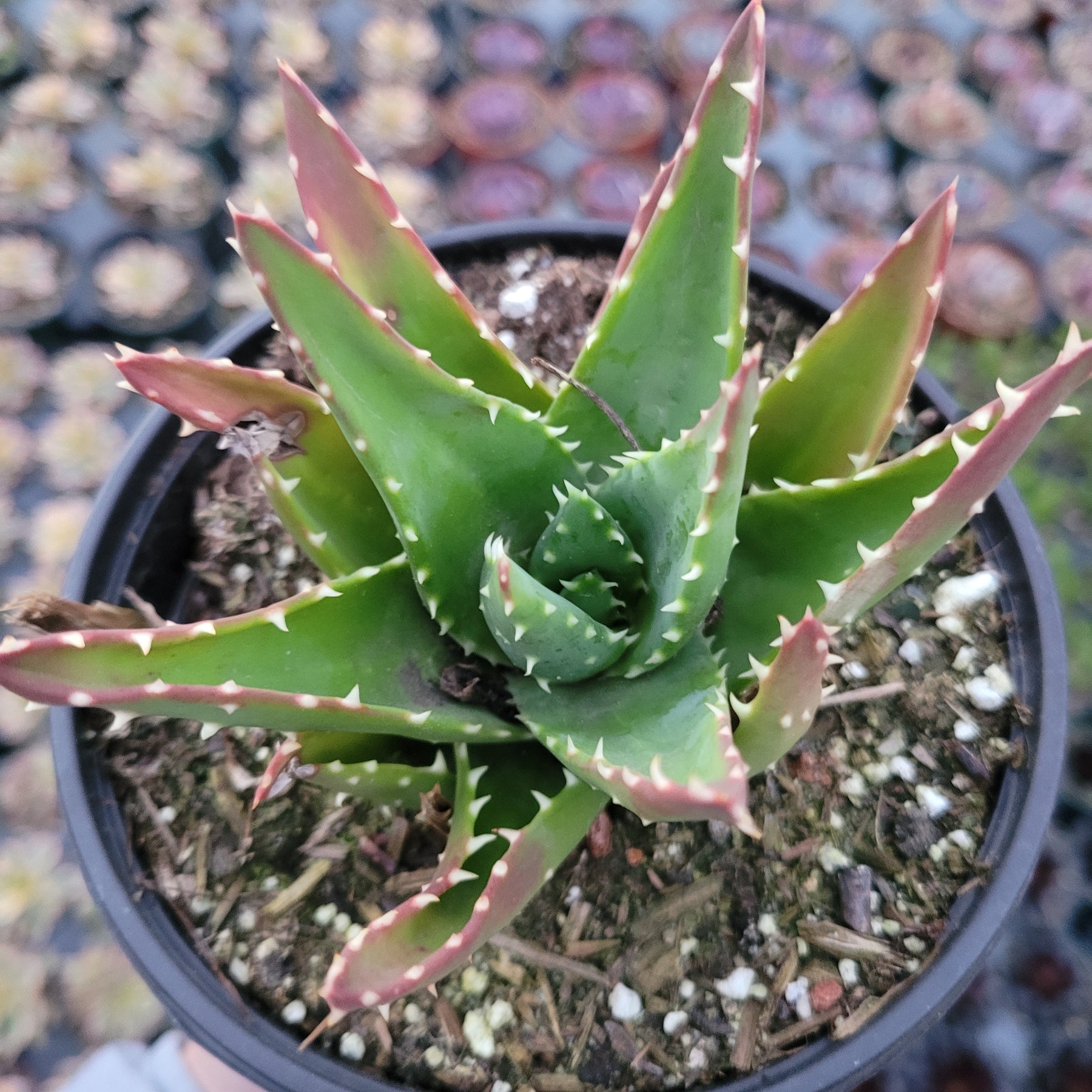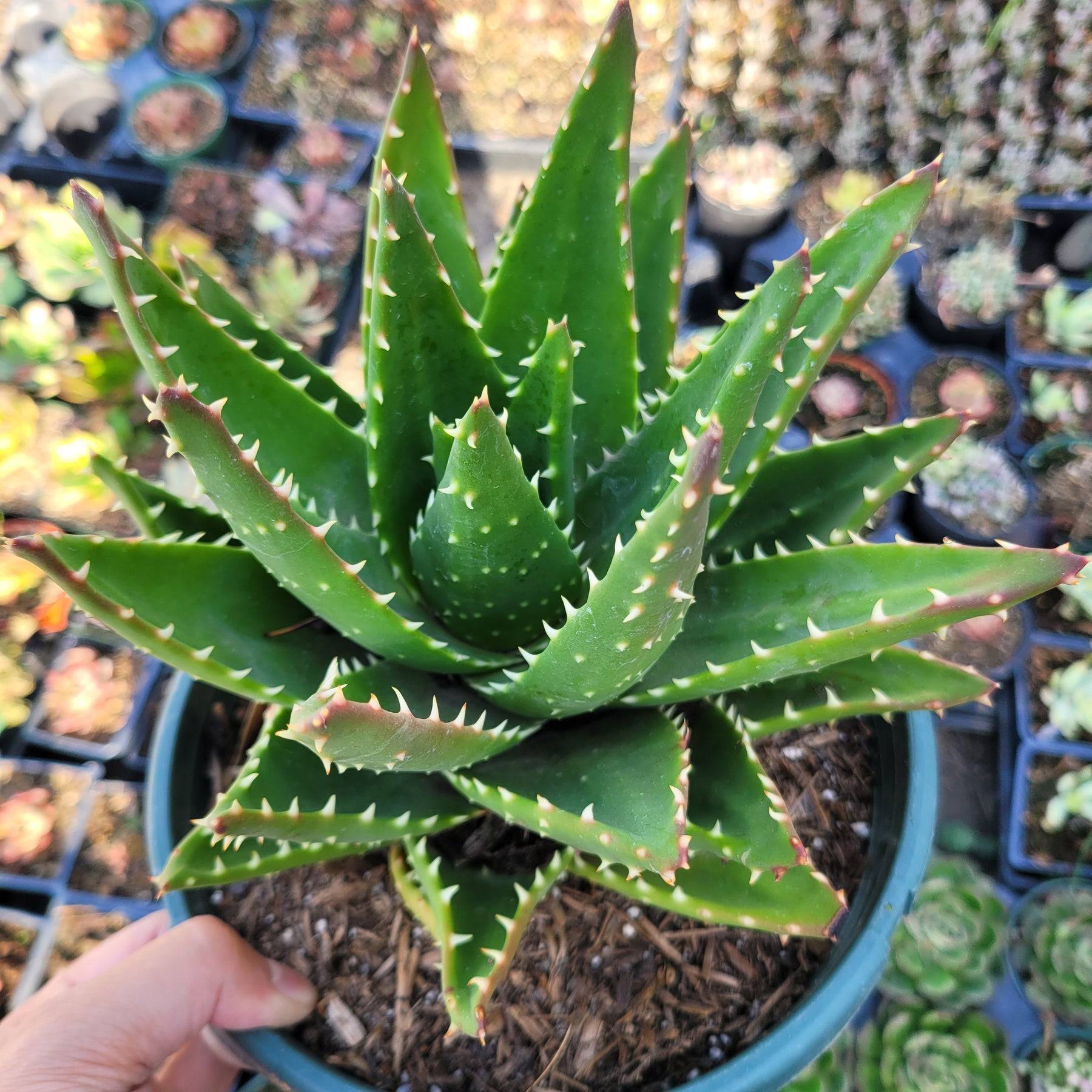This spreading succulent has a blue-green hue and forms clusters on the ground. Its pointed leaves are adorned with harmless, off-white to yellow projections along the ridges, as well as bumps on the underside.
Table of Contents
Care and Propagation Information
The name “Mitre Aloe” for Aloe perfoliata is derived from the way its leaves curve upwards in a mitre shape towards the center. As the plant grows, the clusters spread outwards instead of upwards.
“Mitre Aloe” can appear differently in various environments; if the plant is exposed to direct sunlight, its leaves may take on a reddish hue.
Watering
For optimal care of Mitre Aloe, it is best to employ the “soak and dry” technique, which entails letting the soil dry out completely between waterings. This method meets the typical watering requirements of a succulent.
Where to Plant
If you are in a climate that experiences temperatures lower than 30°F (-1.1°C), you should plant the Mitre Aloe in a pot that can be brought inside. This succulent thrives in direct or indirect sunlight.
Additional information
Previously, Aloe mitriformis was known as Aloe perfoliata.
How to Propagate Aloe perfoliata “Mitre Aloe”
Offsets
The offsets of a Mitre Aloe can be replanted by simply pulling them up from around the base of the plant and allowing them to dry for a period of one to two days.
Seeds
Plant Aloe perfoliata seeds in soil that permits good drainage. If you reside in a region with a climate warmer than USDA hardiness zone 9a, you can sow the seeds outdoors. Those living in cooler areas should start the germination process indoors on a heating mat or under a grow light.
Care and Propagation Information
General Care for Aloe perfoliata “Mitre Aloe”
The name “Mitre Aloe” for Aloe perfoliata is derived from the way its leaves curve upwards in a mitre shape towards the center. As the plant grows, the clusters spread outwards instead of upwards.
“Mitre Aloe” can appear differently in various environments; if the plant is exposed to direct sunlight, its leaves may take on a reddish hue.
Watering
For optimal care of Mitre Aloe, it is best to employ the “soak and dry” technique, which entails letting the soil dry out completely between waterings. This method meets the typical watering requirements of a succulent.
Where to Plant
If you are in a climate that experiences temperatures lower than 30°F (-1.1°C), you should plant the Mitre Aloe in a pot that can be brought inside. This succulent thrives in direct or indirect sunlight.
Additional information
Previously, Aloe mitriformis was known as Aloe perfoliata.
How to Propagate Aloe perfoliata “Mitre Aloe”
Aloe perfoliata “Mitre Aloe” can be multiplied through stem cuttings or seeds, with stem cuttings being the most effective method.
Offsets
The offsets of a Mitre Aloe can be replanted by simply pulling them up from around the base of the plant and allowing them to dry for a period of one to two days.
Seeds
Plant Aloe perfoliata seeds in soil that permits good drainage. If you reside in a region with a climate warmer than USDA hardiness zone 9a, you can sow the seeds outdoors. Those living in cooler areas should start the germination process indoors on a heating mat or under a grow light.
FAQ
How big does Mitre Aloe get?
How often do you water miter aloe?
Checking the soil’s moisture level around the Aloe is the most reliable method to determine when to water it. It is not advisable to water on a regular basis, as the plant may need a large amount of H2O during hot, arid conditions and then only need to be watered every few weeks during other times.
Is Mitre Aloe the same as aloe vera?
It is native to South Africa and is a popular ornamental plant. It is a slow-growing perennial succulent, with striking foliage and bright yellow flowers. It is a great addition to any garden and is easy to care for.
How do you care for aloe perfoliata?
Reformulated: The Aloe perfoliata needs minimal water during colder winter periods and needs to be placed in a spot with bright, indirect light. Fertilizing is not necessary but can be beneficial for the plant.
Should you cut off dead aloe leaves?
You do not need to prune an Aloe vera plant. To maintain the shape of the plant and prevent it from becoming too large or spreading out, remove the older, outer leaves. Additionally, any leaves that appear to be diseased or damaged should be cut off.



